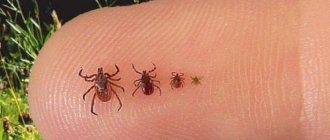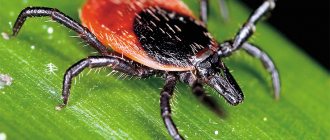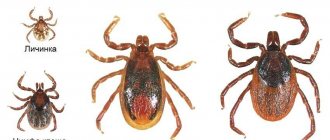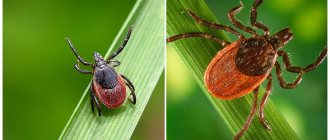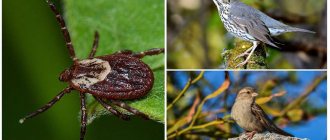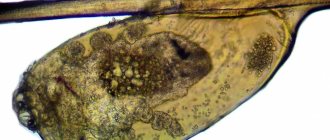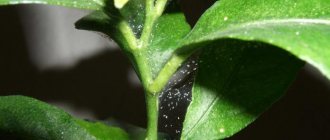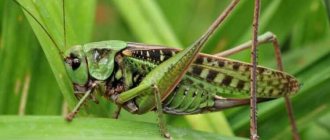- Wild animals
- >>
- Arachnids
Ticks are quite dangerous and unpleasant animals that become more active during the warm season. They are representatives of the most ancient inhabitants of our planet, outliving dinosaurs. Evolution has had virtually no impact on these animals; they have remained unchanged and live remarkably well in the modern world. They choose both animals and people as their victims.
Origin of the species and description
Photo: Mite
The tick is an arachnid animal that feeds on the blood of animals and humans. Nowadays, there are a huge number of varieties of this species, up to 40 thousand.
But two types play a significant epidemiological role:
- taiga tick - its habitat is the Asian and partly European parts of the continents;
- European forest tick - habitat is the European mainland of the planet.
Video: Tick
To this day, scientists have not come to a consensus on where exactly ticks came from and from whom they originated. The main thing is that over a million years of evolution they have practically not changed. The fossil mite is very similar to the modern primitive specimen.
The main hypotheses for the origin of ticks today are the following:
- neotenic origin. Ticks could have originated from chelicerate animals, which were many times larger, but were at an early stage of their development;
- origin from floating larvae of creatures that were unable to move and did not have a central nerve core;
- occurred by truncating the life cycle of an animal that was more specialized.
The latter hypothesis was even directly confirmed. Thus, a chelicerate animal was found with a clutch of hatched eggs. The larvae of these eggs are very reminiscent of ticks, incl. have the same number of legs.
Appearance and features
Photo: What a tick looks like
The size of the tick is small, depending on the type of animal, ranging from 0.1 mm to 0.5 mm. Since ticks are arachnids, they do not have wings. An adult tick has 8 legs, and an individual that has not reached sexual maturity has 6.
On the legs there are claws and suckers, with the help of which the mites are attached to plants. The animal has no eyes, so a well-developed sensory apparatus helps it in orientation. Each type of tick has its own color, habitat and way of life.
Interesting fact: The tick's sensory apparatus, which is located on its limbs, allows it to smell the scent of a victim 10 m away.
The body structure of the tick is leathery. His head and chest are fused, and his head is attached to his body motionlessly. Oribatid mites breathe using special spiracles.
Ticks are quite voracious, but in dangerous situations they can go without food for up to 3 years. By feeding abundantly, ticks increase in weight by more than 100 times.
Interesting fact: It is quite difficult to see a tick with the naked eye. For example, three pincers placed together will correspond in size to a punctuation point.
On average, the tick development cycle lasts from 3 to 5 years. During this long period, ticks allow themselves only 3 meals.
Where do ticks live?
Photo: Klesh in Moscow
Ticks can be found anywhere on the planet. All climatic zones are suitable for their life, regardless of continent, weather conditions and temperature conditions.
The most overgrown place with grass that does not outwardly inspire confidence can be absolutely safe, and vice versa, a well-groomed and landscaped park can be overpopulated with ticks and potentially dangerous.
After all, the presence of benches and trimmed grass does not guarantee the absence of ticks and does not protect against encephalitis. There is a very widespread belief that ticks live on trees and wait for their victims there, rushing at them directly from the branches.
But this is a fairly common myth that has nothing to do with reality. Ticks live in grass and as close to the ground as possible. Tick larvae are found on the grass at a height of 30 centimeters to one meter. The ticks themselves sit on the inner sides of plant leaves next to pedestrian roads and animal paths and cling to anyone who touches this very plant.
According to statistics, a tick usually bites an adult on the lower part of the body: legs, buttocks, groin. But the vast majority of children are bitten in the head and neck area. But, in both cases, there are bites on both the arms and the torso.
Where to expect an attack?
When it's time to eat, the parasite finds the most convenient place to ambush. At the same time, it is guided by air composition, temperature, humidity and even wind direction. Having sensed prey, the tick turns in its direction and begins to move its front legs from side to side. When the prey passes by, the arthropod clings to it. Special hooks and suction cups on its paws help it hold on.
Most often, ticks are located on blades of grass at a height of 10–50 cm, but they can also sit on the branches of bushes. Therefore, when walking in the forest, you must stay in the middle of the path, do not climb into the thickets, and when making a halt, do not sit down or lie down on the grass. Occasionally, a tick may fall onto a person or animal from a branch of a bush or tree.
What does a tick eat?
Photo: Tick in the forest
Ticks also differ in their feeding methods.
Based on this feature, they can be divided into two groups:
- saprophages;
- predators.
Saprophages eat organic remains. That is why such mites are considered very useful for nature and humanity, since they make a certain contribution to the creation of humus. However, there are saprophagous mites that feed on plant sap. These are parasitic mites. This type of animal causes great harm to agriculture, as it can destroy grain crops.
There are mites that eat exfoliated particles of human skin - the epidermis. These mites are called dust mites or scabies. Barn mites are suitable for feeding on plant residues that decompose, incl. rotting flour and grain.
For subcutaneous mites, the ideal option is subcutaneous fat, which it takes from human hair follicles, and for ear mites, the fat from the ear canals. Predatory mites parasitize other animals and plants. Using its legs, a blood-sucking tick attaches itself to its victim, and then purposefully moves to the feeding site.
Interesting fact: A blood-sucking tick can choose its relative, the herbivorous tick, as its victim.
Are there parasites in the city?
Every year the distribution area of ticks is expanding. Today you can meet them not only in the forest or countryside, but also in the city. They choose conditions as close as possible to the natural environment, namely: shade, dense vegetation, high humidity. City parks, recreation areas, flower beds, grassy vacant lots and playgrounds are places where ticks are found in urban environments.
In large cities, the likelihood of an attack by a tick infected with the encephalitis virus tends to zero, however, when you find yourself in a place where ticks could potentially live, you must be careful to avoid being bitten.
Features of character and lifestyle
Photo: Tick in Russia
Ticks begin to become active in mid-late spring, namely at the end of April, beginning of May. To awaken them, it is necessary for the earth to warm up to three to five degrees. And this continues until the end of August, beginning of September, until the temperature of the earth drops to the same level. The population and density of ticks directly depends on weather conditions. If the summer was not hot and with a lot of rain, and the winter was snowy and not severe, then next year the tick population and density will increase.
The female tick, after sucking blood at the beginning of summer or late spring, lays eggs from which larvae will appear, but they will bite anyone only the next year. But, the larva or nymph, which sucked blood from the host this year, moves to the next phase of development also this year. After a tick has chosen a victim and attached itself to it, it may take about twelve hours before it begins to suck blood. On the human body, ticks prefer places with hair, as well as places behind the ears, knees and elbows.
Due to the fact that ticks have saliva with an anesthetic effect and anticoagulants in their arsenal, their bite is invisible to the owner. The maximum duration of blood sucking by a tick is fifteen minutes. The life expectancy of ticks also varies depending on the species. Dust mites live from 65 to 80 days, but mites living in the taiga live about four years. And without food, depending on the species, ticks live from one month to three years.
Now you know how dangerous a tick bite is. Let's see how they reproduce in the wild.
Indicators of the map of Russia
In any part of the country where ixodid ticks live, there is a risk of tick-borne encephalitis and borreliosis (Lyme disease). If you are bitten by an insect, it is important to seek medical help and have the parasite tested in a laboratory. In regions with a high degree of threat, the local population is vaccinated to prevent diseases.
Ticks are less common in the following areas:
- Voronezh;
- Belgorodskaya;
- Kursk;
- Lipetskaya;
- Bryansk;
- Vladimirskaya;
- Kaluzhskaya;
- Orlovskaya;
- Smolenskaya;
- Murmanskaya;
- Ryazan;
- Tambovskaya;
- Magadan;
- Penza;
- Tula;
- Saratovskaya.
The epidemic is absent in:
- Moscow;
- Yakutia;
- Kamchatka region;
- Mordovia;
- Autonomous Nenets Okrug;
- Chuvashia;
- Caucasian southern region.
The remaining territories remain an epidemic threat.
Map of the spread of encephalitis in Russia
The incubation period depends on the body’s immunity and endurance. On average it ranges from two weeks to three months . fever , vomiting, joint and muscle pain, fever from 38 to 40 C.
This condition can be mistaken for the flu - the symptoms disappear or become less pronounced after 5 days, but recovery does not occur. A few days later, the disease returns, the virus cells penetrate the brain and spinal cord, destroying the liver.
Important! A person needs urgent medical care, otherwise there is a threat to life and health: mental disorders, disability, death.
There are no medications for tick-borne encephalitis, but there is immunoglobulin therapy, which prevents the development of the disease. A strong immune system helps to finally defeat the infection.
Social structure and reproduction
Photo: Encephalitis tick
Ticks reproduce in different ways, depending on the type of animal. Most ticks are oviparous. Viviparous individuals are less common. Individuals are clearly divided into females and males.
The following stages of animal development are distinguished:
- eggs. During the warm period, the female, after full saturation with blood, lays eggs. The average clutch consists of 3 thousand eggs. The shape of eggs can be different, both oval and round. The size of the egg as a percentage of the female’s body is not small;
- larva. The larva hatches from the egg after a couple of weeks. She immediately looks like an adult tick, the only difference being the size as she is smaller. The larvae lead an active lifestyle in warm weather. They choose small animals as their victims. Complete saturation with blood occurs within 3-6 days, and then the larva disappears;
- nymph. The tick becomes this after its first full meal. It is larger than a larva and has 8 limbs. The speed of her movement increases significantly, so she can choose large animals as victims. Often as nymphs, most ticks survive cold times;
- adult. After a year, the nymph grows into an adult, female or male.
Interesting fact: The fertility of a female tick is 17 thousand eggs.
Nymph. Is a nymph dangerous?
Having eaten someone else's blood, the tick larva eventually turns into a nymph. The latter has larger dimensions (1-2 mm) and already has four limbs. As a result, the tick nymph can choose larger animals as objects for parasitism, and even attack humans.
Just like adult ticks, nymphs are carriers of various infections, and therefore dangerous.
Natural enemies of ticks
Photo: What a tick looks like
Ticks occupy one of the lowest positions in the food chain. What is horror and a nightmare for humans is a holiday for birds and others who feed on them. There are many man-made means to combat ticks. But nature itself has succeeded in this. There are a considerable number of insects and animals that feed on them or lay eggs in them. Spiders, frogs, lizards, wasps, dragonflies, this is not a complete list of those who see the tick not as a danger, but as food.
Fungi also kill ticks, causing various types of fungal infections and diseases. Based on this information, you need to understand that mass persecution of ticks or burning of grass is a disaster, because the natural balance will be disrupted, and this will lead to the death of both the ticks themselves and the species that feed on them.
And here, after sweeping away the natural enemy from hunger, a new mite may appear and develop even stronger in the remaining areas of the surviving grass. Also, when burning the grass, they also burn the grave spores, which infect the tick and prevent them from reproducing and infecting them with fatal infections. And plus, after burning, new grass grows, even softer and better than the previous one, which certainly has a beneficial effect on the increase in the tick population.
